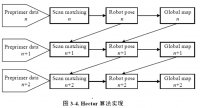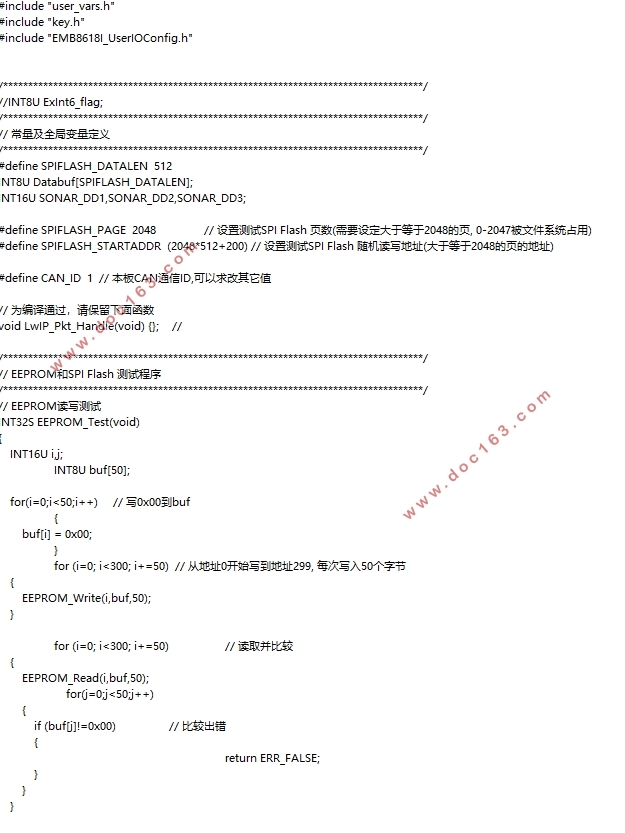未知环境下的机器人路径搜索算法与实验研究

未知环境下的机器人路径搜索算法与实验研究(任务书,开题报告,论文10000字,程序清单)
摘要
当今社会人类活动范围日渐扩大,而很多活动已经不适合人力来完成,使用机器人来完成这些任务,从而减少人力负担、规避可能存在的风险,便是如今时代工程人员需要研究的方向。作为一种新时代的生产工具,机器人表现出了极大的优越性。他们可以提高生产效率,减轻劳动强度,改变生产模式等。近年来机器人开始广泛应用于娱乐、体育、工业、服务领域中, 尤其在一些作业环境比较恶劣的情况下, 如焊接、火灾侦察、生化探测、隧道凿岩及抢险救灾等,将人们从危险,繁重,恶劣的工作环境中解放出来。
同步定位与地图构建 SLAM(Simultaneous Locali-zation and Mapping)是移动机器人研究领域的热点和难点,是移动机器人在未知环境中实现自主导航的前提。SLAM 是指移动机器人在未知环境移动过程中通过自身携带的传感器获得环境信息增量式建立环境地图,同时利用已建立的地图来更新自身的位置与位姿。同步定位与地图构建过程中位置和地图的估算形成了一个相辅相成、不断迭代的过程,其本质是一个状态估计问题,主要通过基于滤波器或基于平滑的方法进行求解。
移动机器人的路径搜索和导航是机器人学的传统课题,在假设机器人环境已知的条件下,已经有了大量的研究成果。在实际应用中,环境对于机器人来说往往只是部分已知甚至是完全未知的,不完整环境信息下的机器人导航通常是基于传感器数据的.和已知环境下的方法相比,基于传感器的方法更侧重发现一条可行的通往目标点的路径,而不是去寻找最优的路径。而本课题所研究的背景环境,便是在隧道挖掘过程中,设计隧道机器人去完成各种的探测工作。而对于这样一台隧道机器人而言,尽管隧道挖掘会有工程规划图,但隧道内的实际具体环境仍然是一个未知环境,因此需要做到在这样的未知环境下进行路径搜索,便是本课题研究的内容。 [资料来源:https://www.doc163.com]
关键词:机器人;SLAM;人工智能; 自主探索
Abstract
In today's society, the scope of human activities is expanding, and many activities are not suitable for human beings to complete. Using robots to accomplish these tasks, thereby reducing the burden of manpower and avoiding possible risks, is the direction that engineers of today's era need to study. As a production tool of a new era, robots have shown great superiority. They can increase production efficiency, reduce labor intensity, and change production patterns. In recent years, robots have been widely used in the fields of entertainment, sports, industry, and service. Especially in some cases where the working environment is relatively harsh, such as welding, fire reconnaissance, biochemical detection, tunnel drilling and rescue and disaster relief, people are at risk. Heavy, ruined in a harsh working environment.
Synchronous Positioning and Map Construction SLAM (Simultaneous Locali-zation and Mapping) is a hotspot and a difficult point in the research field of mobile robots. It is the premise of mobile robots implementing autonomous navigation in an unknown environment. SLAM refers to the mobile robot incrementally establishing an environment map by obtaining environmental information through sensors carried by itself during the movement of an unknown environment, and using the established map to update its position and posture. Synchronous positioning and the estimation of position and map during map construction form a complementary and iterative process, which is essentially a state estimation problem, which is mainly solved by filter-based or smoothing-based methods. [来源:http://Doc163.com]
The path search and navigation of mobile robots is a traditional subject of robotics. Under the assumption that the robot environment is known, there have been a lot of research results. In practical applications, the environment is often only partially known or even completely unknown to robots. Robot navigation under incomplete environmental information is usually based on sensor data. Compared with methods in known environments, sensor-based methods More focus on finding a viable path to the target point, rather than finding the optimal path. The background environment studied in this subject is to design tunnel robots to complete various exploration tasks during the tunnel excavation process. For such a tunnel robot, although the tunnel excavation will have an engineering plan, the actual specific environment in the tunnel is still an unknown environment. Therefore, it is necessary to perform path search in such an unknown environment. Content of the study.
Key words: robot; slam; artificial intelligence; automous exploration
[资料来源:https://www.doc163.com]


目录
摘要 I
Abstract II
1 绪论 1
1.1 背景与意义 1
1.2国内外机器人SLAM发展现状 2
1.3 设计的方法与内容 4
1.3.1 设计的方法 4
1.3.2 设计的内容 4
2 机器人实验平台的搭建 5
2.1 机器人实验平台概述 5
2.1.1机器人硬件配置 5
2.1.2 机器人软件配置 5 [资料来源:http://www.doc163.com]
3 SLAM算法的探索 6
3.1 SLAM算法的概述 6
3.2 Cartographer算法分析 6
3.2.1 Cartographer算法摘要 6
3.2.2 Cartographer机器人模型 6
3.2.3 点特征 7
3.2.4 线特征 8
3.2.5 占用网格图 8
3.2.6 Cartographer框架 10
3.2.7 Cartographer 实验结果 11
3.3 Hector算法分析 12
3.3.1 Hector算法摘要 12
3.3.2 Hector 算法实验结果 13
3.4 SLAM算法选择 14
4 自主探索算法分析 15
4.1 自主探索算法概述 15
4.2 自主探索算法实现 15
4.2.1 深度优先搜索 15
4.2.2 深度优先搜索实现 17
5全文总结 20
致谢 21
参考文献 22 [资料来源:Doc163.com]
